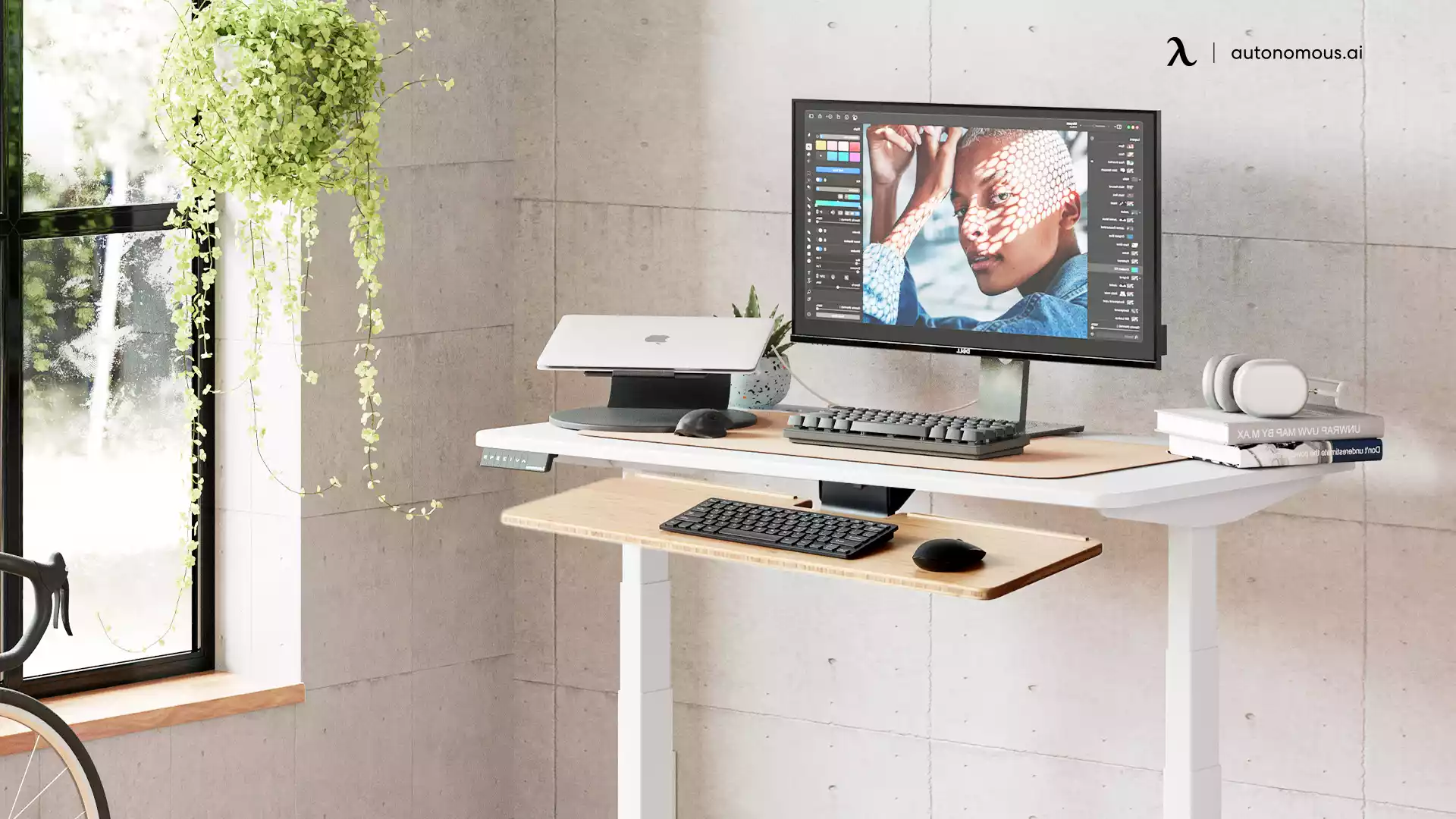
7 Common Problems of Keyboard Trays for Desk & Solutions
Keyboard trays have several advantages for users. However, not everyone will find them to be ideal or comfortable to use. Over the years, there have been some complaints about these workspace-enhancing accessories from users.
You may have had to stop using your keyboard tray for desk enhancement or manage the issues as best as you can.
This article will look at seven of these and suggest simple solutions to improve ergonomics and work efficiency at the desk.
Benefits of Having a Keyboard Tray for Desks
The value of the benefits varies from person to person, especially when comparing individuals who already have an RSI injury to those who don't. The advantages of having a keyboard tray for desk improvement are as follows:
Customization
Using a computer desk with keyboard tray may alter your workstation to suit your needs and preferences. The board's varied dimensions can be changed to fit your unique requirements better.
Many people appreciate using a keyboard that is slightly slanted in their direction. It makes moving to the top rows of keys much simpler.
Reduce the Chance of Injury
Reducing or eliminating pain brought on by an injury is a vital advantage. If everyone uses a desk keyboard tray, you won't see as many RSI problems in the workplace.
You can't deny that trays lower the chance of discomfort and suffering at work, whether or not you appreciate having one or not.
Increase Productivity
Last but not least, you'll discover that your productivity and efficiency soar because you're more at ease and typing is much simpler. This is mainly noticeable in two areas: overall typing speed and keystroke accuracy.
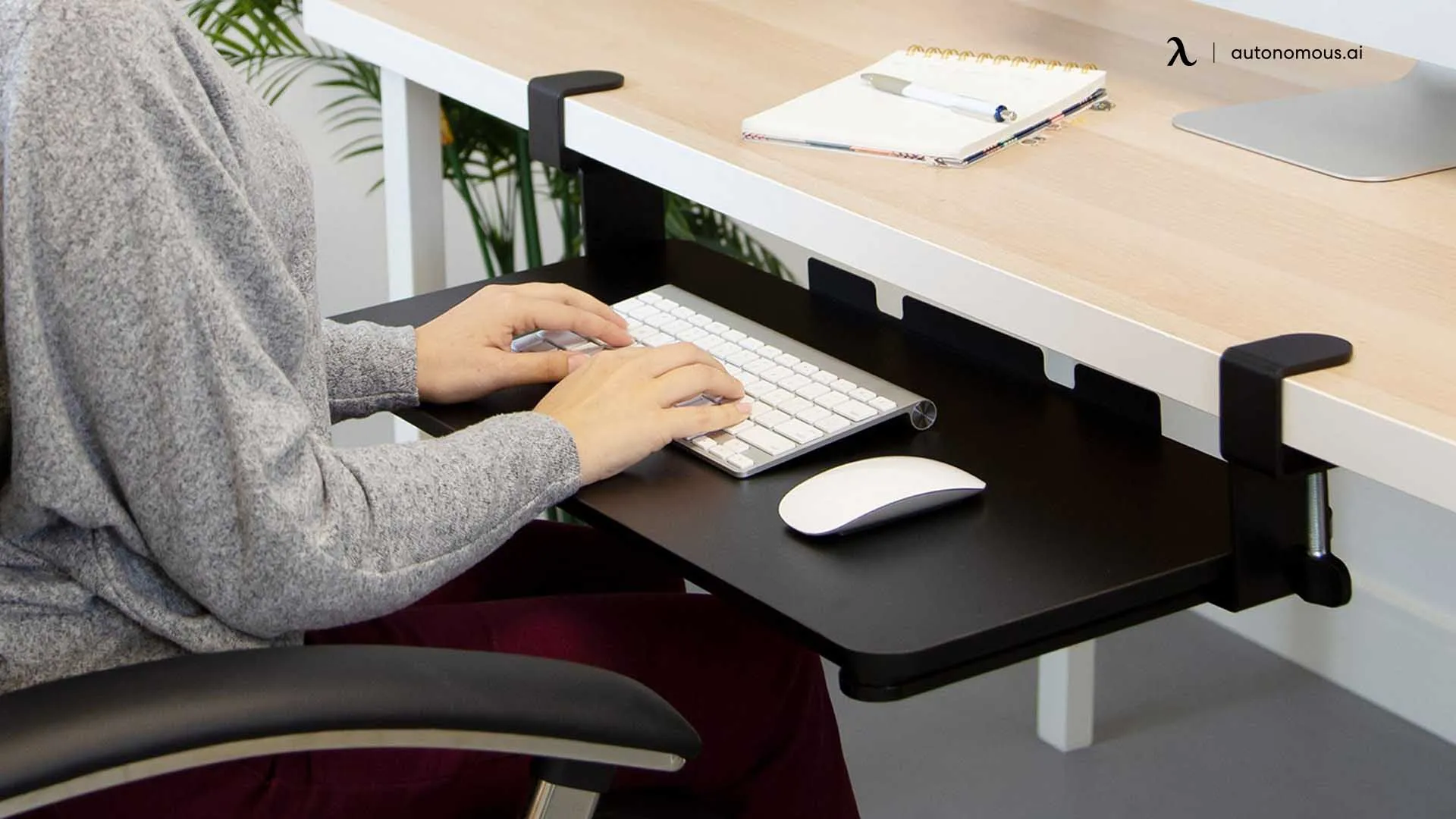
A List of the Desk Keyboard Tray Problems and Solutions
1. Keyboard Trays Reduce Leg Space
The most common complaint about keyboard trays for desks is how they obstruct a user's knees. Because they are positioned under the desk, they tend to reduce leg space when they are bulky.
You can't use a keyboard tray under a desk if you are tall.
How to Solve this Problem
This could not be a big issue, depending on how you already use the desk and how it is set up.
It is advisable to choose a clamp-on keyboard tray that is not too large. Several options are ultra-thin and fit under your desk without much issue.
You can also consider using an adjustable desk to complement your keyboard tray. It allows you to increase desk height, creating more space underneath for your legs and knees.
The SmartDesk 2 is a perfect example to help you.
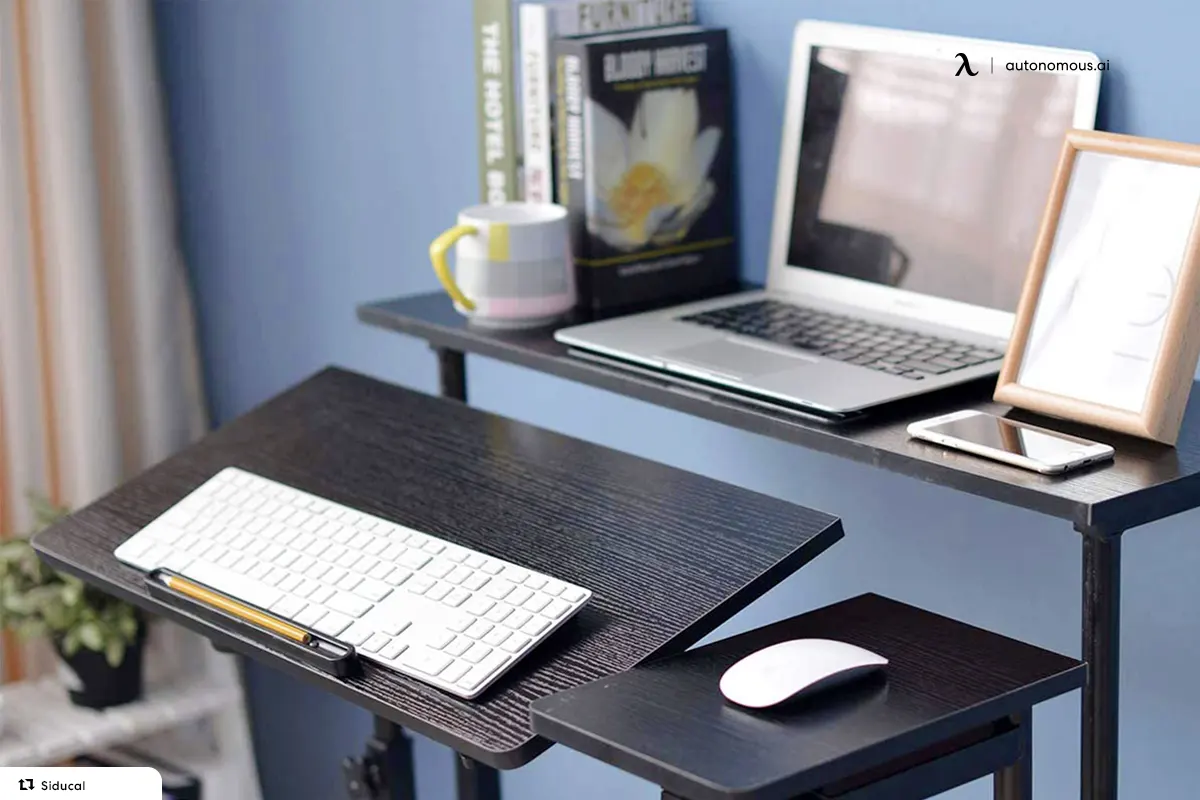
2. Limited Keyboard and Mouse Area
You have probably discovered that many options exist when looking for the ideal computer keyboard tray. The one you choose can have restricted space for the keyboard and mouse, depending on how much free space there is under your desk.
It is possible to have a desk keyboard tray without enough space to host some large keyboards and mouse devices.
Additionally, upright ergonomic mice need additional room to be used properly. The standard keyboard tray solutions are probably too tiny if you use large keyboards and mice.
How to Solve this Problem
To solve this problem, you first need to know the minimum space required to freely use your keyboard and mouse. You should be able to gauge how much space you regularly need by setting your keyboard and mouse down on a sizable, flat surface.
Knowing how much space you need will influence the size of the keyboard tray for desks you buy.
There are numerous tray design options available. The single platforms are a fantastic spot to start your search if you need a lot of space.
You can move the location of the keyboard and mouse using one big tray.
Consider trays with separate mouse pads or even a mouse and keyboard stand.
3. Keyboard Trays Can Be Awkward
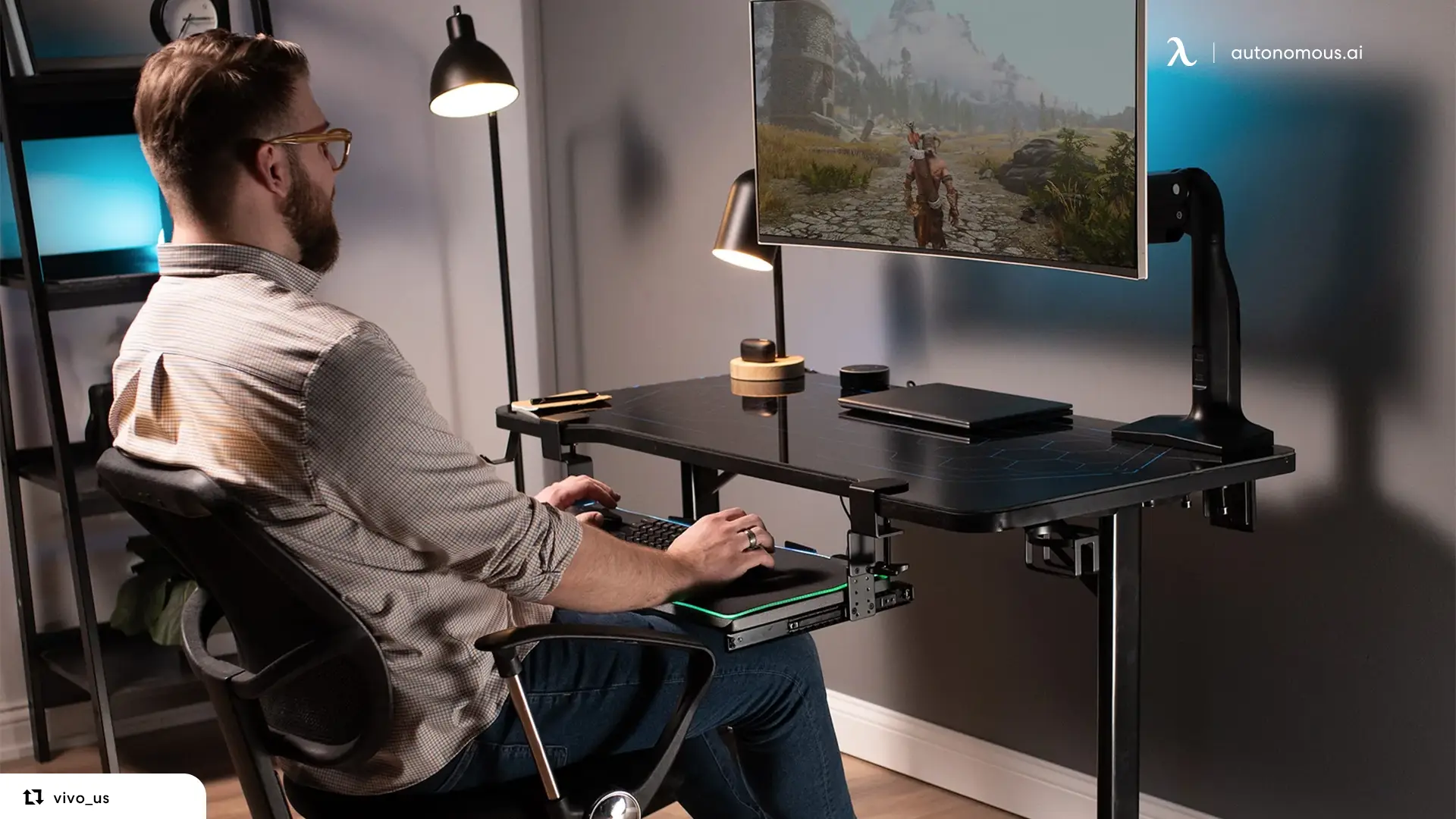
A user's difficulty adapting to a new keyboard tray for desks is one of the most frequent causes of returns. This may be due to several reasons, but if you've never used one, it may take some getting accustomed to. This uneasiness is partially caused by the constrained sensation your little workspace gives off.
Many keyboard trays for desks today come with wrist support intended to support the keyboard region. These could be a hassle depending on the keyboard's thickness.
Some thin keyboards make it nearly impossible to use the usual hefty wrist supports found on under-desk keyboard trays.
Keyboards that include built-in wrist support have a different issue. A tray with wrist support takes the keys further away from the user.
Depending on how you choose to use your mouse, a wrist brace may limit how much movement your mouse hand can make. As you try to adjust to using your mouse, this may cause additional problems.
How to Solve this Problem
Users can eliminate this issue by first comparing the wrist support on the keyboard tray to the height of your keyboard. It is challenging to prevent the wrists from resting on these while you work. You should, therefore, ensure the wrist pad attached to the tray fits comfortably.
A keyboard tray with removable wrist support is the best solution. The thickness of your tray and keyboard causes no problem in this case. These trays are also perfect for keyboards with built-in wrist supports.
The exposed part of the tray may not be as comfortable for your wrists if the wrist support is removed. This isn't a problem if your keyboard mount has an integrated wrist rest.
4. Incorrect Setup for Keyboard Trays
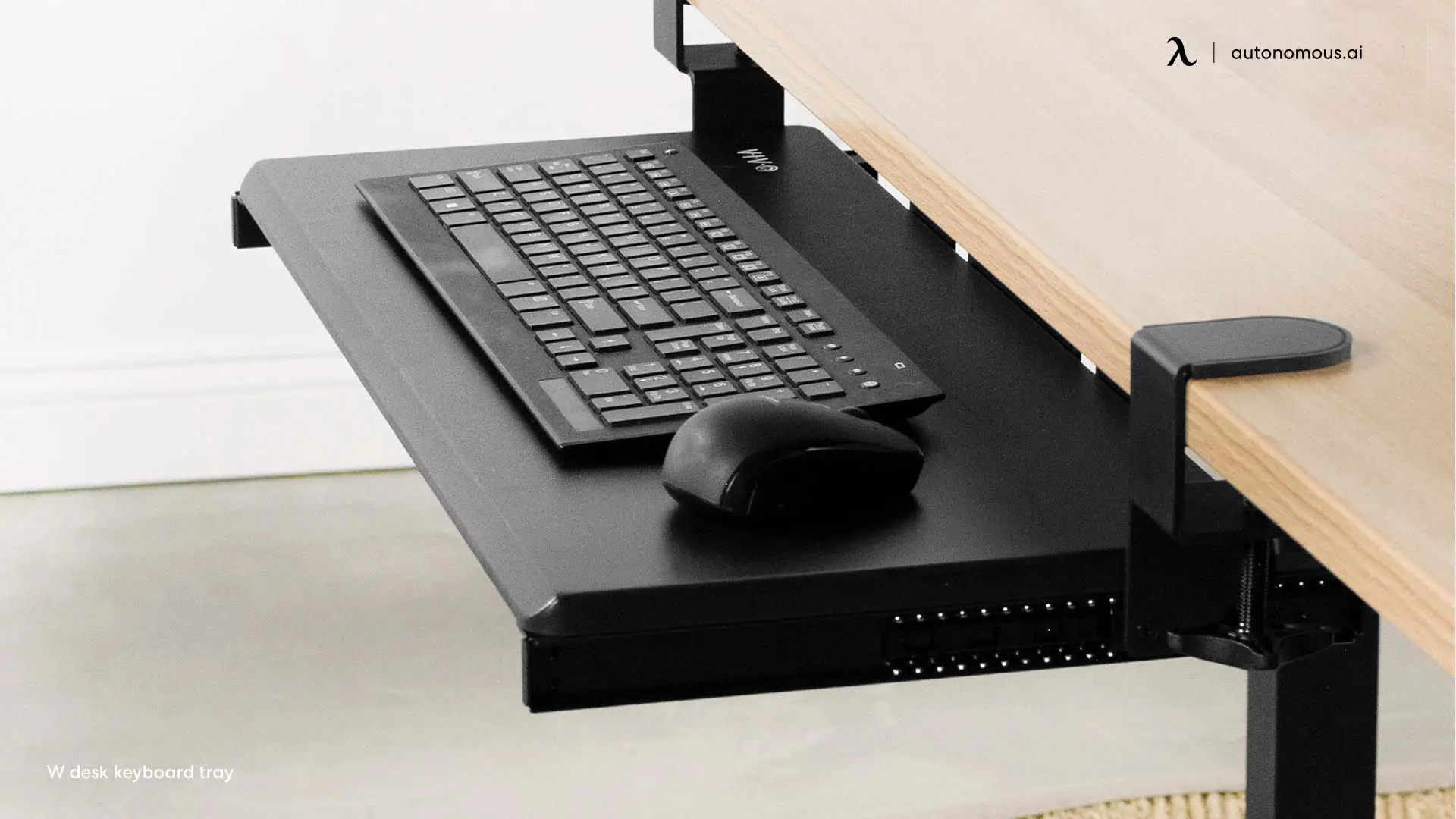
Research shows that several keyboard systems in companies and homes tend to be set up improperly. Many users tilt their ergonomic under-desk keyboard tray just because the option exists for them to do so.
Contrary to popular belief, a positively inclined keyboard tray is unhealthy for your wrists.
This position elevates the part of the desk keyboard tray that is farthest from you, making the part of your keyboard closest to you go over the edge.
Users often flex their wrists when doing this, thus increasing the risk of wrist issues such as carpal tunnel syndrome.
Although it can be uncomfortable, you should use your keyboard flat on the tray. You will eventually realize the difference and opt for it more.
Despite first appearing to be in a pleasant position, using the tray tends to cause problems that eventually force its discontinuation.
How to Solve this Problem
Your keyboard tray for desks should be in a flat or slightly negative posture when being used. This forces your wrists into a neutral position to lessen the stress that users experience when using a positively slanted keyboard tray.
Changing your behavior might be difficult if you have used your keyboard tray in the wrong position for a while.
Over time, you'll discover that having a better posture will make you feel better when sitting at your computer.
A keyboard clamp mount can also help you adjust the position of your keyboard better.
5. Bouncing Keyboard Trays
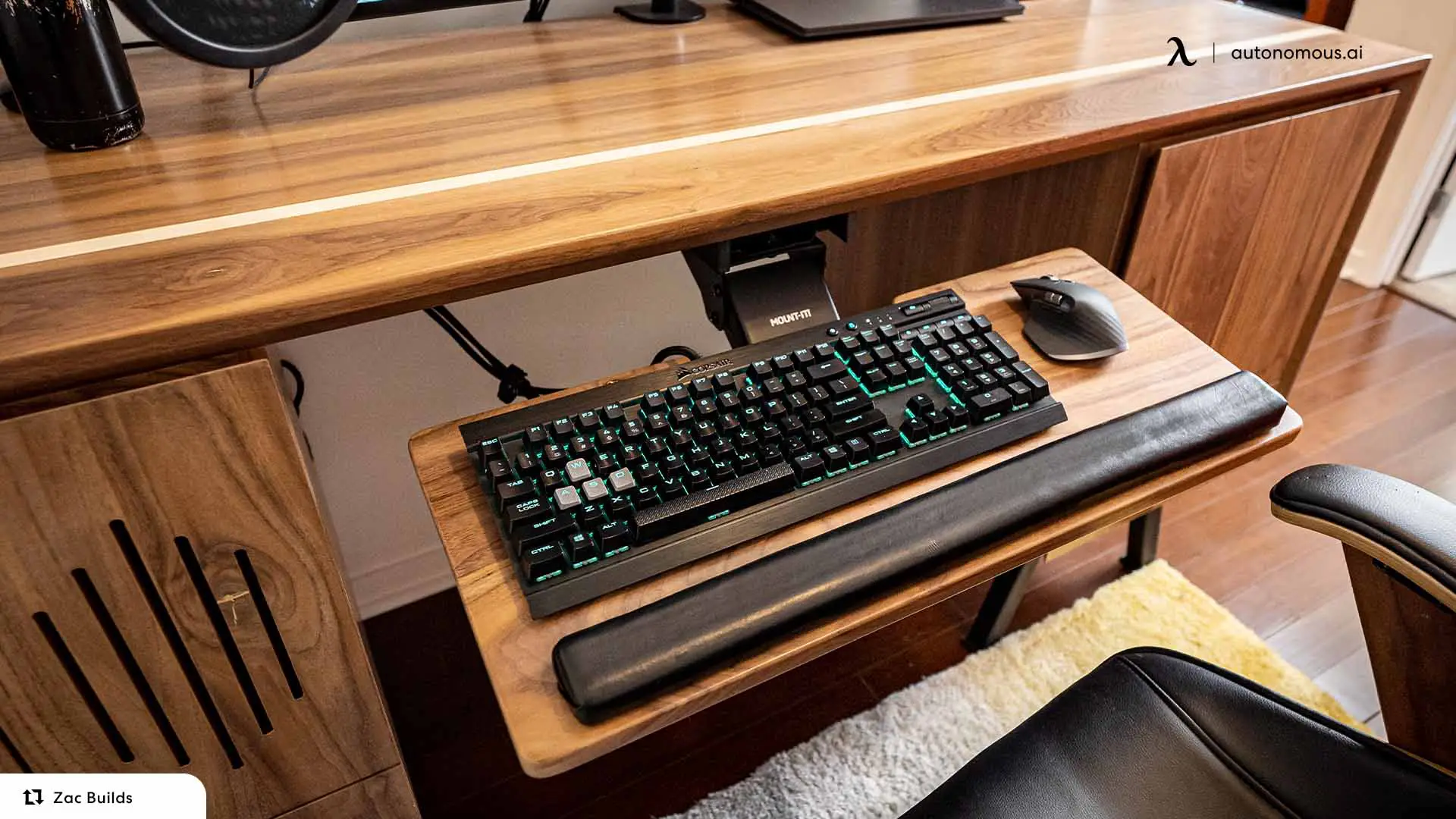
You'll note that practically all computer keyboard trays include an extended arm arrangement when you look at their design. The system's bounce rises as your arm extends outward toward the tray. This is especially true when you press down on the keyboard tray's extreme left or right edges.
These areas of the keyboard tray for desks will bounce the most since the mouse is often placed at the point where it is the broadest on the left or right side.
Although some brands are undoubtedly worse than others, practically all keyboard trays have bounce problems due to the general system design.
Thin plastic keyboard trays bounce the most because of their inherent stretching properties.
How to Solve this Problem
You might not be as aware of the bounce as other users, depending on how forcefully you type or how much pressure you apply to the tray.
The first step in solving this problem would be to practice typing more gently or apply less pressure to the keyboard tray when using your mouse.
Since this is part of their daily routines for years, changing won't be easy.
Examining steel keyboard trays, such as the Uncaged Ergonomics KT1 Under-Desk Keyboard Tray, is an excellent option.
The Mount-It! Keyboard Tray: Adjustable Tray isn't flawless. However, it's a better alternative because the extended arm design still causes flexing and bouncing concerns.
Some keyboard trays also come with platforms made of thick pieces of wood. These devices offer enough flat space to use your keyboard and mouse with less bounce.
They also reduce the amount of stretching you typically encounter with plastic trays. The thickness of the wood, however, presents some additional knee clearance concerns.
The final choice would be to consider an arm system that links to the tray on both sides. A sliding desk tray is often designed this way, even though most lack height or tilting adjustments.
6. Keyboard Trays Can Be Expensive
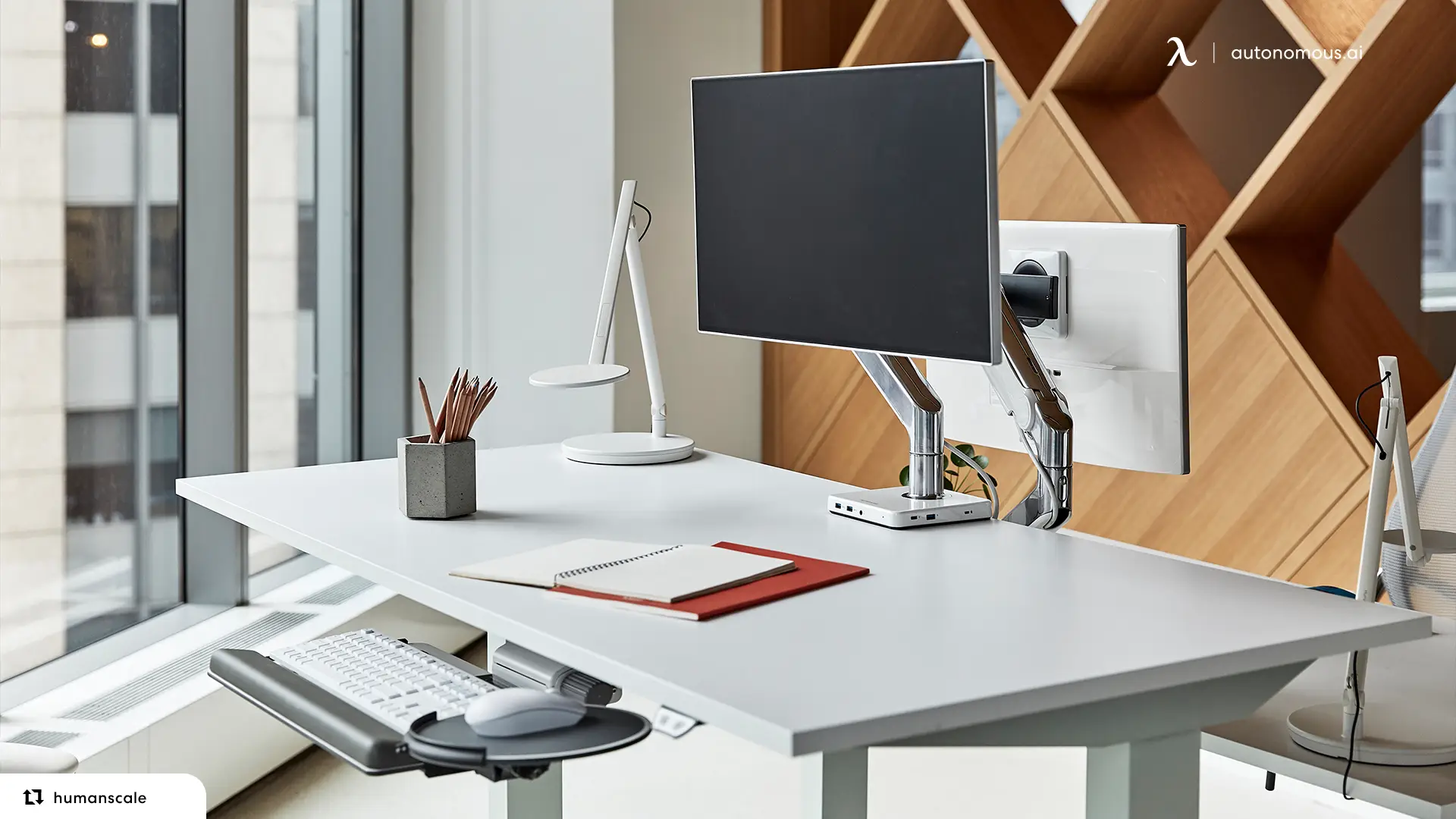
If you're looking for a high-quality keyboard tray for a computer, prepare to experience the shock of the prices you see. High-quality commercial items are significantly more expensive than some lower-end keyboard trays.
Some of the most affordable commercial solutions cost more than $200, which is still on the high side. However, this is necessary if you want a under-desk keyboard tray setup with a great platform and an easy-to-use mechanism.
How to Solve this Problem
Unfortunately, the quickest fix for the pricing issue may leave you with a substitute of poorer quality. There are a lot of inexpensive goods to choose from in big-box retailers. This might be acceptable to some people, while others consider the one-time investment in quality a good option.
Users who bought quality systems from Autonomous are still using them. They often contact support in search of replacement wrist rests and mouse pads but not the track or mechanism itself.
Keyboard systems are similar to most other things in life in that you get what you pay for.
7. Depth Requirements When Installing Keyboard Tray Track System
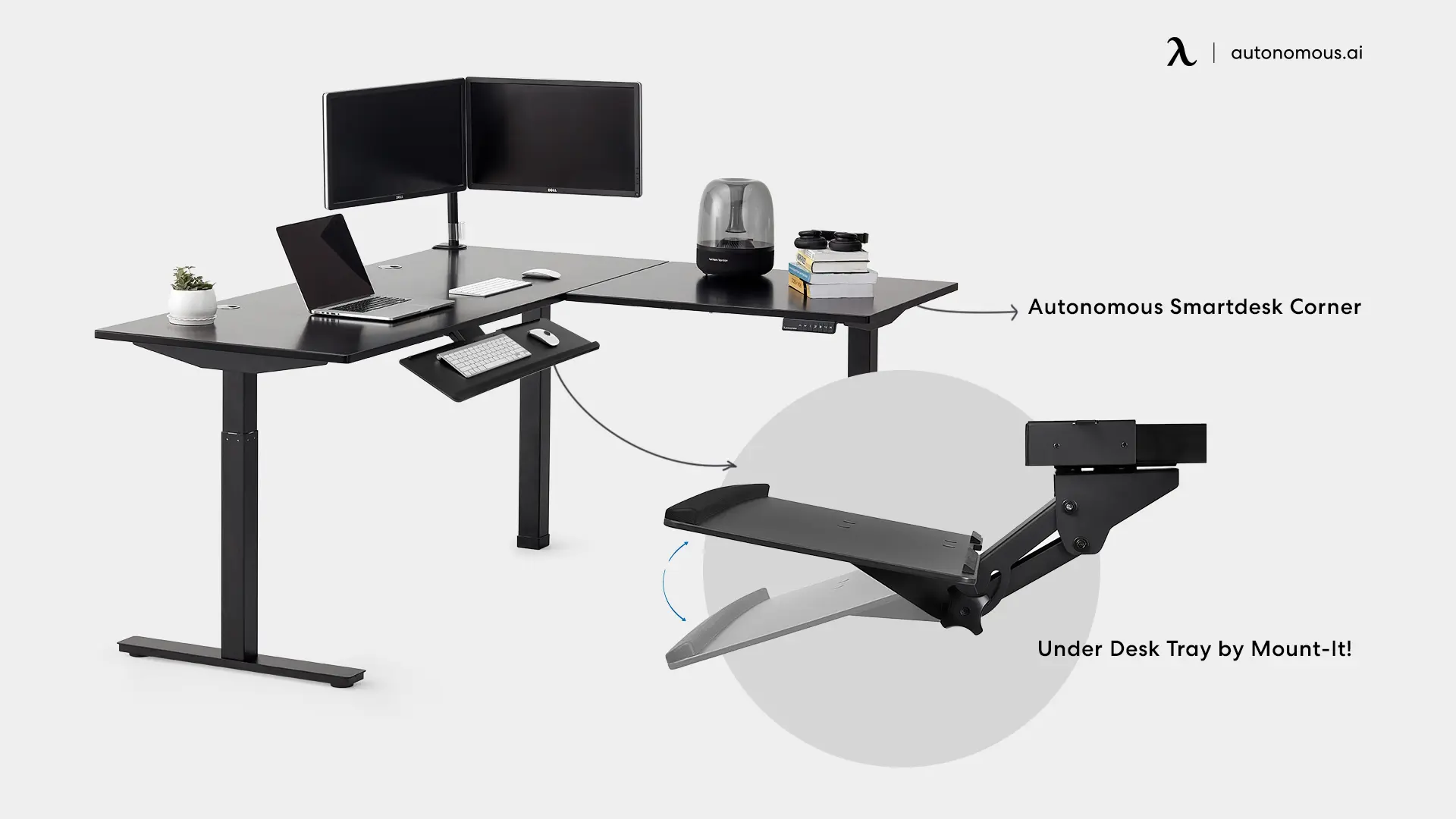
When choosing the ideal keyboard tray, width is not the only factor to consider. The depth needed to install a under-desk keyboard tray system is something that many overlook, even though it is vital.
Keyboard tray depths can range from 14 to more than 20 inches, depending on the arm mechanism. This means there must be a minimum of 14 inches of clear, level space from front to back to attach the track system effectively.
Bigger and deeper mechanisms tend to be more sophisticated and easier to change.
While standard sitting desks don't have as much of a problem with the required depth, standing desks do.
Standing desks that are only 24 inches deep are typically worse than those that are 30 or more. With the leg positioning placed back from the center, C-frame designs are preferable to most T-frame options.
The elements under the frame also shift back from the center based on the leg position.
How to Solve this Problem
Make sure to measure twice and confirm the depth specifications with the brand you are purchasing as your initial step. This will increase your chances of avoiding purchasing the incorrect size system.
One of the most popular methods is to shim it to the bottom of the surface of the depth of the computer keyboard tray is a problem. Customers typically span the problematic frame piece with blocks of wood. Because of the potential for knee clearance concerns, buyers should exercise caution.
As an alternative, trackless keyboard systems are made by makers of keyboard trays. The keyboard tray mechanics fold out and extend, using much less depth. Many will also include the partial and full height and tilt adjustments.
These trays don't slide, causing them to protrude past the desk surface's front edge frequently.
Some of these trackless systems do not tuck beneath the desk surface and may provide difficulty for knee clearance.
Conclusion
Keyboard trays can be great additions to your workspace if you're trying to clear some desk space or create a more comfortable computing experience.
You should consider a few issues before buying desk accessories or ergonomic gear.
Decide whether a keyboard tray will be a good fit for your needs after carefully weighing each of the issues mentioned in this article.
Stay connected with us!
Subscribe to our weekly updates to stay in the loop about our latest innovations and community news!
Interested in a Link Placement?
.svg)

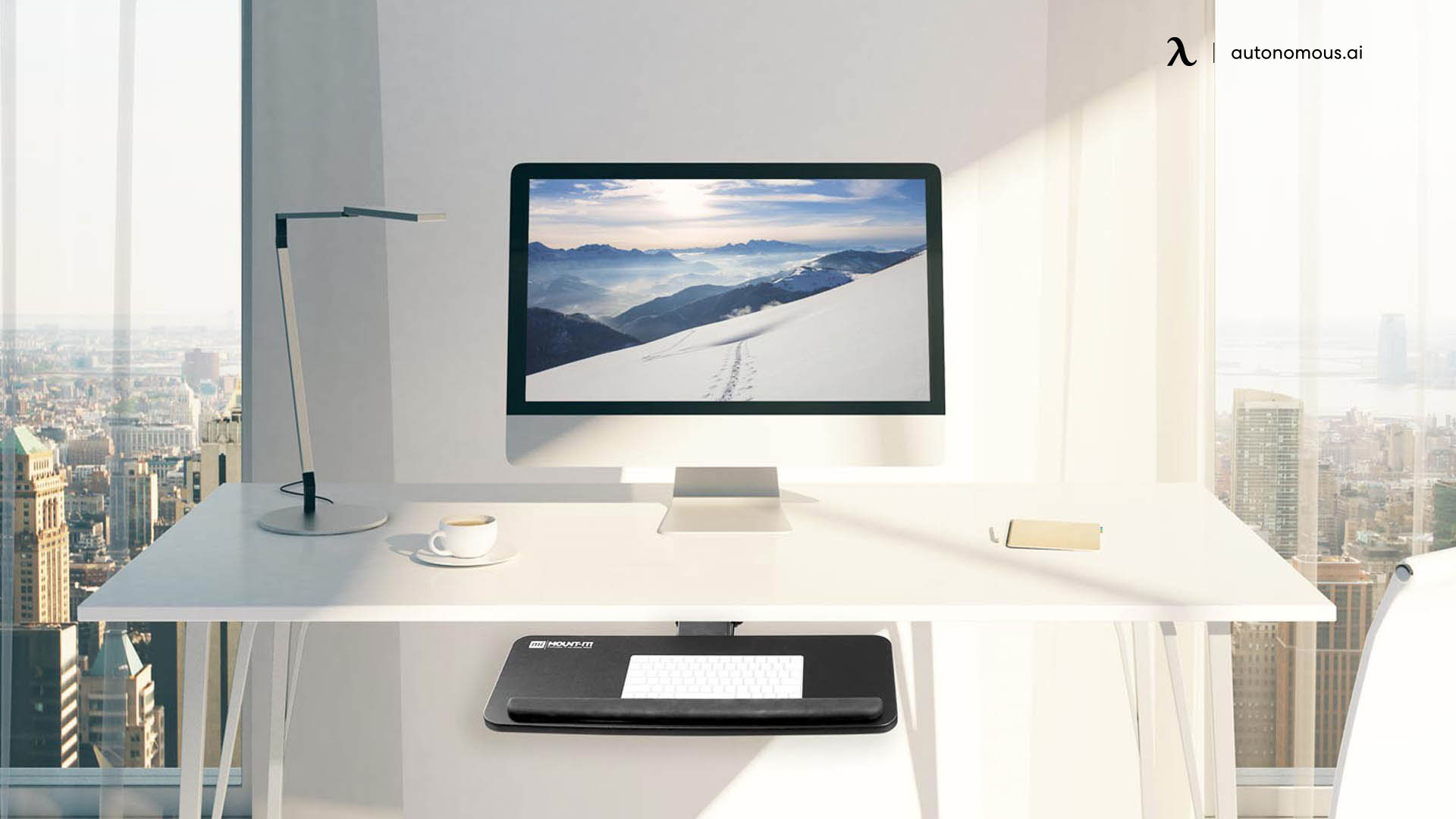
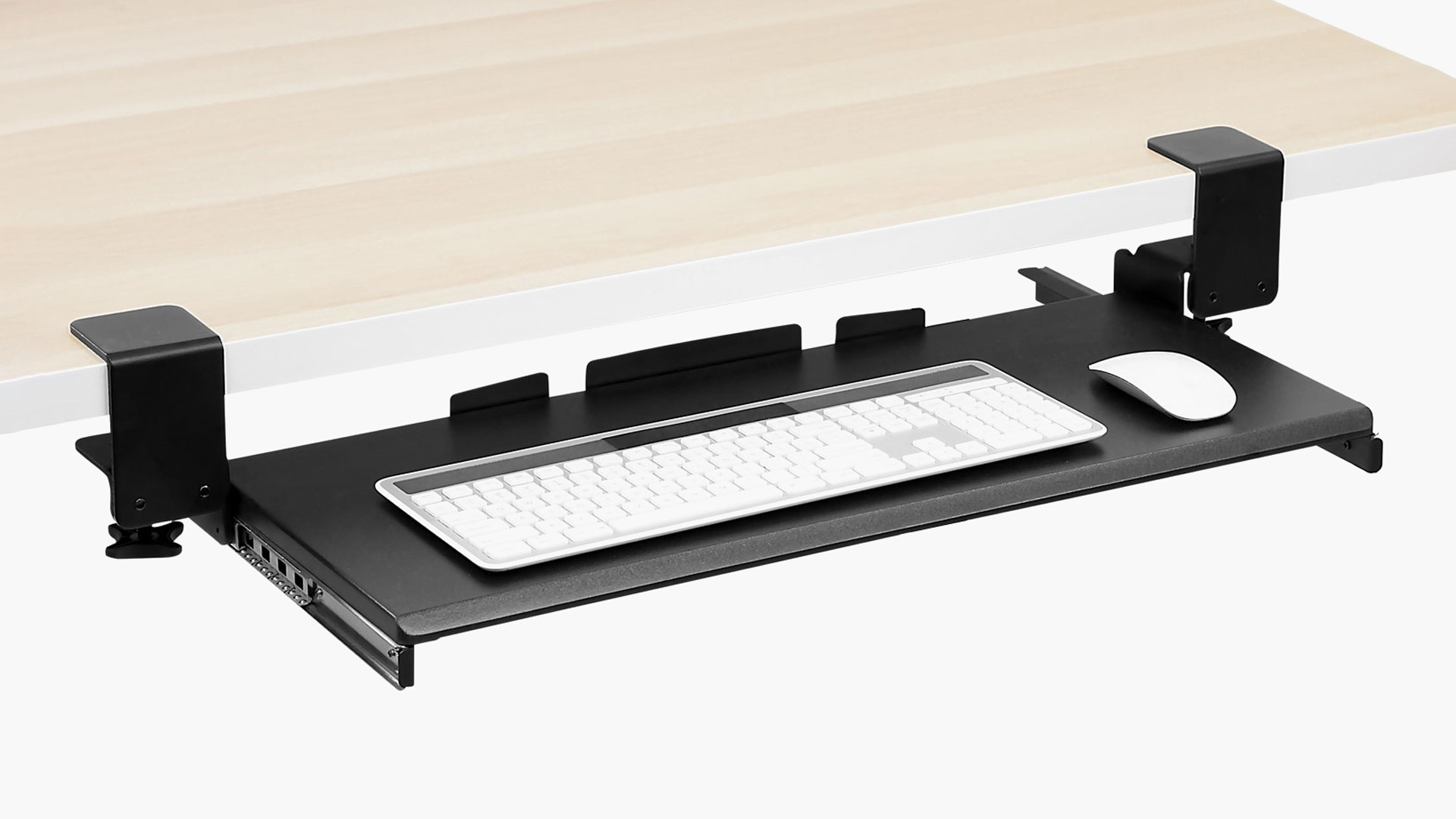
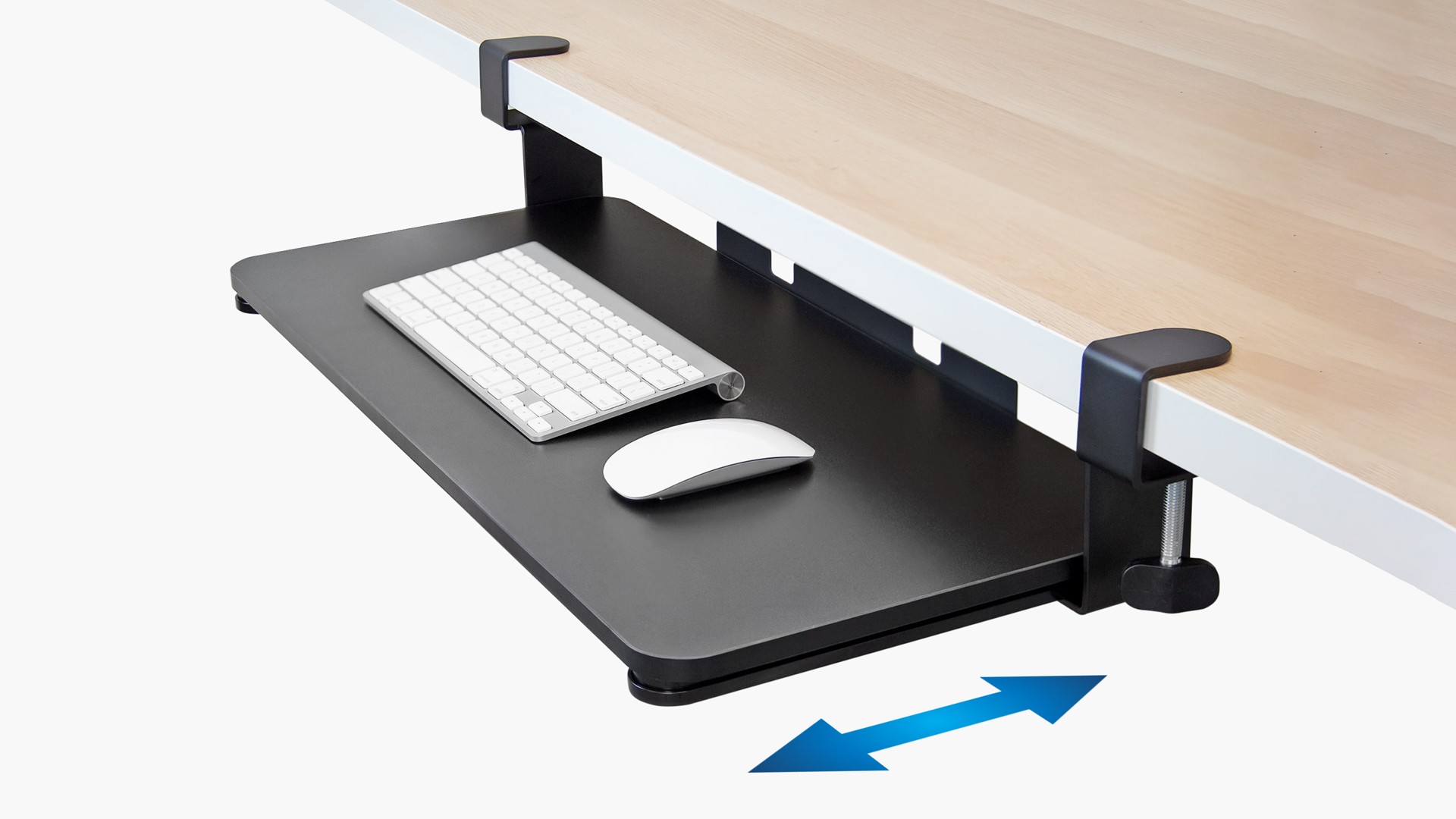



/https://storage.googleapis.com/s3-autonomous-upgrade-3/production/ecm/230914/bulk-order-sep-2023-720x1200-CTA-min.jpg)

/https://storage.googleapis.com/s3-autonomous-upgrade-3/static/upload/images/new_post_author/admin-1.png)